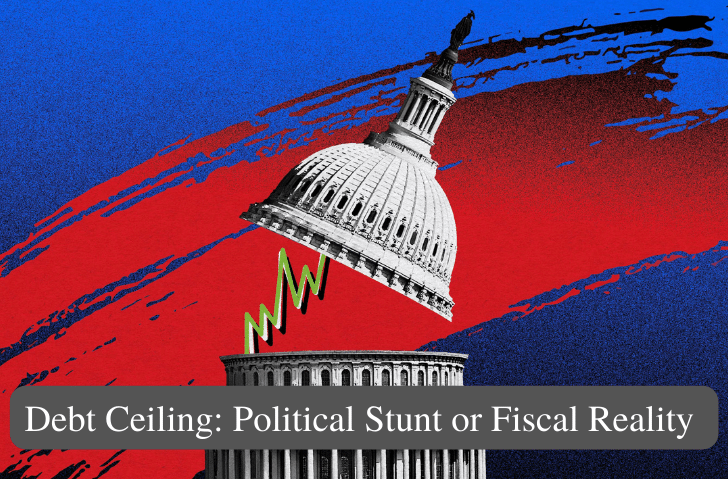The U.S. debt ceiling has been a hot topic of debate in recent years. Despite the serious overtones attached to this topic, is it possible that the hullabaloo surrounding the debt ceiling is more of a political maneuver rather than a genuine fiscal concern? Let’s delve into the history and the underlying constitutional provisions to find out.
The Debt Ceiling and Its Political Ramifications
The debt ceiling, put simply, is the maximum amount of money that the U.S. government is legally allowed to borrow. It was first introduced in 1917, and since then, it has been raised, extended, or suspended nearly 100 times, mostly without any major controversy. However, in recent years, it has become a tool for political posturing, often leading to eleventh-hour resolutions that raise more questions than they answer.
Prioritizing Spending Over Defaulting
It’s worth noting that not raising the debt ceiling doesn’t automatically mean that the U.S. will default on its debts. Instead, it would force the government to prioritize its spending, ensuring that revenues are first allocated towards servicing the debt. This has been misconstrued as a default scenario, which isn’t accurate. A default would occur if the U.S. failed to make payments on its existing debt, an event that has only happened twice in the country’s history: once in 1790, due to the Revolutionary War debts, and again in 1933, when the U.S. changed the gold standard during the Great Depression.
A Spending Problem, Not a Revenue Problem
The crux of the matter is that the U.S. government has a spending problem, not a revenue problem. The recurring debt ceiling drama is a symptom of this larger issue. According to data from the U.S. Treasury, the federal debt has more than doubled in the last decade, indicating an unsustainable trajectory.
It’s worth asking: could a failure to raise the debt ceiling and a forced prioritization of spending be a wake-up call for the government? Could it spur a reassessment of fiscal policies and encourage more sustainable spending habits?
In conclusion, while the concept of a U.S. default is alarming, it is vital to separate the political posturing from the actual fiscal realities. Understanding the history, the constitutional provisions, and the actual implications of not raising the debt ceiling can provide a clearer, more nuanced perspective of this complex issue.
By dispelling the myths and focusing on the facts, it becomes clear that the debt ceiling issue is less about the danger of default and more about the need for fiscal responsibility. Maybe, just maybe, it’s time for a change in our approach towards government spending.
Is your retirement plan at risk? If your retirement plan is exposed to risks associated with issues you can’t control ie. Debt Ceiling, Elections, etc. then your retirement plan has already failed. Make sure to contact me to go over your plan.

